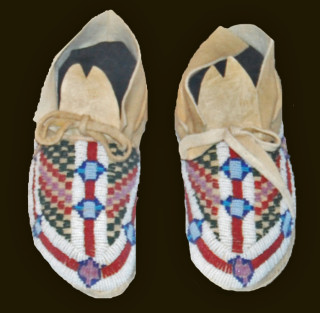Ethnology

The Museum's Ethnographic Collection is composed primarily of artifacts produced by Utah Native American groups: Goshute, Navajo, Paiute, Shoshone and Ute, or are from neighboring tribes that had significant ties with the indigenous people of Utah. The earliest artifacts were collected in the 1890s and the most recent addition includes a modern Navajo basket collection acquired in 2013. Unlike archaeological collections that are obtained from excavation and survey, the ethnographic collections have grown through generous donations and the acquisition of significant private collections.
Beaded regalia and moccasins are perhaps the best known objects in the ethnographic collection. Other objects include blankets, rugs, clothing, masks, basketry, jewelry and historic pottery. Ethnographic collections are valuable not only as examples of modern material culture, but also as examples of continuity, or lack of continuity, between the prehistoric past and present-day Native American traditions. Important examples of continuing traditions include the Southwestern Kachinas, objects decorated with beads, pottery, basketry and many other important ethnographic pieces.
*Ethnology is the study of living or contemporary cultures, a branch of anthropology.